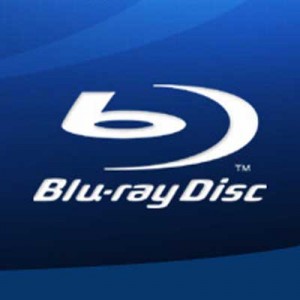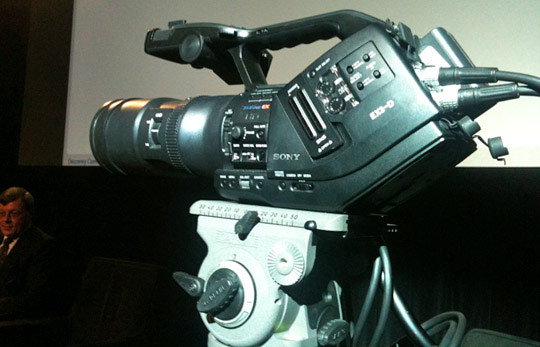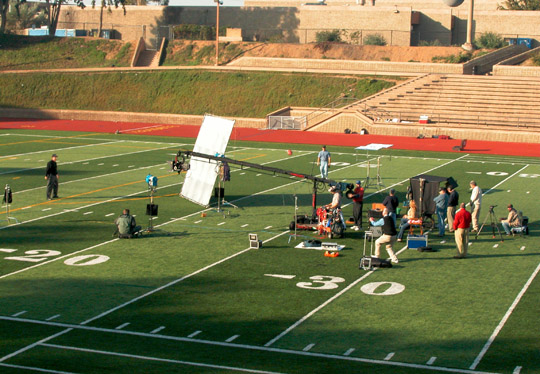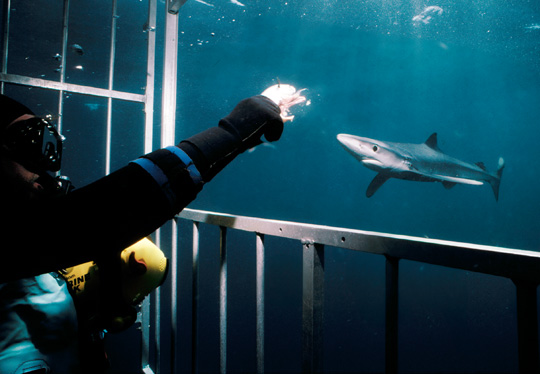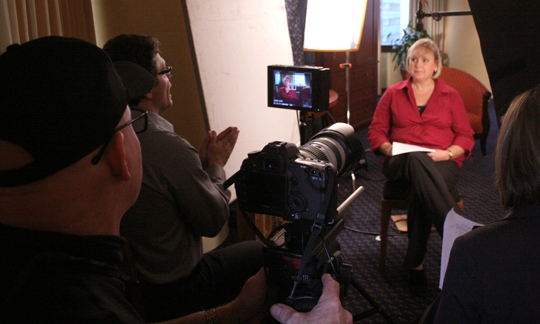In April we produced a video for the Breathe LA organization of Los Angeles. Shot with two Panasonic Varicams and edited back at Sloan Productions in San Diego on our high definition non-linear edit system by Bob Sloan. Photographers were Jeff Landie and Jim O’donnell. See the video below.
Intersport – Surfer’s Healing
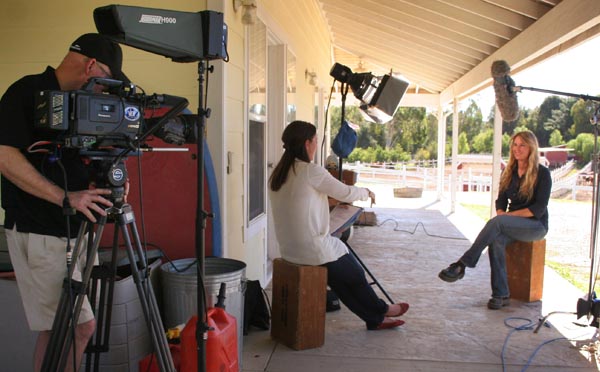
Sony Enters the 3D Camcorder Race
Just unveiled today during NAB Digital Cinema Summit. Sony‘s entry into the 3D camera race, the EX3-D. Currently a prototype, yet has full 1920×1080, records to sxs cards, adjustable inter-axial and convergence, interchangeable lenses. To be field tested in July.
Photo credit: Bob Sloan, Sloan Productions
Camera Platforms
If a cameraman will have to spend a lot of time at his camera position and be elevated above the action, specialized platforms are available allowing much more flexibility and comfort, plus the ability to relocate with flexibility.
Mickelson
For the opening to a Sports Illustrated Sportsman of the Year television special, renowned golfer Phil Mickelson addresses the camera. For this shot we used a Sony F-900 High Definition Camcorder mounted on a 25 foot jib arm for long time client Intersport of Chicago.
Working with Sharks
With the popularity of sharks in television programming Sloan Productions has answered the call on numerous occasions to share the set with them. In this photo, Bob Cranston draws a blue shark closer to the camera during a shoot for Inside Edition off of San Diego.
Canon 5D Mark II Production
Chris La Palm directs while Bob Sloan shoots with the Canon 5D Mark II. One of the Canon 5D‘s advantage for a DP is that it has a full frame sensor which allows for very shallow depth of field to help isolate your subject from the background. You also have the entire line of Canon lenses to choose from, from 14mm to 600mm.
How to Best Prepare PowerPoint Slides for Video & DVD Production
Many times we have incorporated our client’s PowerPoint slides into their video and DVD productions. Because computer displays and television displays are different, keeping a few things in mind will be of help to both of us.
PowerPoint presentations are optimized for computers. DVDs are optimized for television. There are a number of differences between high-resolution output for computers and low-resolution output for television. Basically, computer resolution is far greater than television’s resolution of 720 x 486 pixels (NTSC). Also, normal televisions at a minimum crop as much as 10% from around the edge (5% from each edge), resulting in a number of consequences when incorporating PowerPoint images into your video production and then to DVD. Keeping the following guidelines in mind when designing your PowerPoint presentation will help insure a good DVD experience as well.
These are as follows:
• Try to use 30 pt fonts or higher as small text may get lost on video.
• Use sans serif (e.g. Arial, Helvetica) bold fonts.
• Use no more than 4 or 5 lines of text per slide.
• Avoid the color red, use darker colors and greens and blues.
• Keep your graphics simple.
• Provide at least a 15% border around the edge.
We realize that these recommendations may seem limiting to you for your live presentation but it helps to be aware of this. In addition, audiences basically prefer simpler graphics. Too much information can cause them to disassociate altogether with the slide.
Buying a Blu-ray DVD Player for Christmas? What you need to know.
